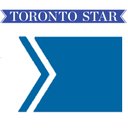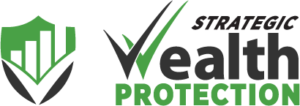
By Clarrie Feinstein | Business Reporter
Jan. 9, 2023
New year. New tax benefits.
All three levels of government have introduced new tax benefits and changes for 2023. While it might seem too early to be thinking about taxes, it’s best to know all the benefits now to receive optimal refunds, said Evelyn Jacks, a tax expert and president of Knowledge Bureau, a financial-education institute.
“You want to file the tax return as quickly as possible to get the refund owed to you,” she said. “Any (monetary) amount can make a difference.”
Speaking to the Star, experts highlighted some of the most significant tax benefits and changes:

iStock-1284113173.jpg
First Home Savings Account
Starting on April 1, the Tax-Free First Home Savings Account (FHSA) gives first-time home buyers a third option for saving up on a down payment that is tax free, in addition to the existing Tax-Free Savings Account (TFSA) and the Home Buyers’ Plan (HPB).
The FHSA helps prospective home buyers save up to $40,000, with an annual contribution limit of $8,000 per year.
Similar to an RRSP, you can deduct contributions to your FHSA from your taxable income — so you’ll likely get a nice tax refund. Also like an RRSP, the contributed money will compound and grow tax free. Even better, unlike an RRSP, you don’t have to pay taxes on the money when you take it out.
But there are drawbacks: If you don’t max out your annual $8,000 contribution, you can’t roll over the unused portion to the next year. And there is a lifetime contribution limit of $40,000.
“It’s a good idea, but is it enough?” said Arif Amjad, associate partner with SRJ Chartered Professional Accountants. “If a 20 per cent down payment is $80,000 that buys you a $500,000 home. I’m not sure that exists in the GTA.”
However, having another account to help save for a first home is helpful combined with other savings accounts, he said.
Vacant Home Tax
The City of Toronto’s vacant home tax aims to improve housing supply and affordability by cracking down on homes that have no occupants. The deadline to file the mandatory form to declare whether or not your property is empty is Feb. 2.
The online submission is fairly simple, said Amjad, with property owners needing to submit information from their property tax form.
Vacant property holders will have to pay a tax that’s calculated as one per cent of the current value assessment (CVA) of the home. If that’s $1,000,000 for example, they will need to pay $10,000 in tax.
It’s based on the property’s status for the previous year. So, if it’s vacant in 2022, that tax will be paid in 2023. Owners owing money will be issued a vacant home tax notice in March/April and payment will be due on May 1.
But opinion is split on whether the vacant home tax will improve housing supply and affordability, because the vacancy rule is difficult to track and enforce, said Ian Calvert, vice-president and principal of wealth planning, at HighView Financial Group.
Submitting information from property tax forms is simple to do and can be easily done by property owners who only live in their Toronto home for short periods. But the new rule can also incentivize homeowners to rent out their home, boosting the housing supply, Calvert said.
In Vancouver, five years after rolling out the tax, there are 36 per cent fewer vacant homes.
Tax brackets and taxable income shift
All federal income tax brackets have been indexed to inflation using the 6.3 per cent rate — in Ontario it’s 6.5 per cent.
“This is a good thing,” said Calvert. “It means you need to earn more to pay more taxes.”
For example, in the top federal tax bracket you need to earn more than $235,675 to pay the highest tax of 33 per cent on income above this amount. Last year, the salary was more than $221,708. For the lowest tax bracket, if you earn up to $53,360 you pay 15 per cent tax. Last year, the income threshold was almost $50,200.
In addition, the basic personal amount (BPA), or the income an individual earns without paying federal income tax, is also increasing to $15,000.
In December 2019, the federal government announced annual increases to the BPA until it reached $15,000 in 2023. But the amount is gradually clawed back for those earning more than $165,430. Once your income reaches $235,675, at the top tax bracket, the BPA is reduced to $13,521.
“The calculations are a bit difficult for each tax bracket, but everyone gets some non-taxable income still,” said Jacks. “It’s a tax-free zone that really helps people in a lower tax bracket the most.”
Work from home credit
This credit was introduced in the pandemic as more people worked from home. Employees working from home at least 50 per cent of the time for at least four consecutive weeks due to the pandemic could claim compensation.
One way to claim compensation was through the “temporary flat rate method” which let eligible individuals receive up to $500 in 2021 and 2022.
To apply requires minimal supporting documentation, making it an easy application process, said Ajmad. However, it’s important to note than in 2023 the flat rate option will be gone and only the “detailed method” will remain, he added.
This more elaborate method calculates the actual amounts an employee paid in the work-from-home office in order to get a full refund of expenses. The supporting documentation is more time-intensive; a full list of receipts is needed to prove expenses as well as conditions of the employment signed by the employer.
A few others …
- The new TSFA annual dollar limit is $6,500 up from $6,000, said Calvert. “Even though it’s small, it’s been at $6,000 for a few years so any bump is good news,” he said.
- The Old Age Security clawback amount is now almost $87,000 up from $81,760 last year. That means before the Canadian Revenue Agency starts to claw back a retiree’s Old Age Security, the income threshold is higher, he added.
- Amjad is also reminding households of the Canada Dental Benefit, which helps families who earn less than $90,000 a year, lower dental costs. The tax-free payment ranges from $260 up to $650 for each eligible child. The first benefit period is between Oct. 1, 2022 and June 30, 2023.


